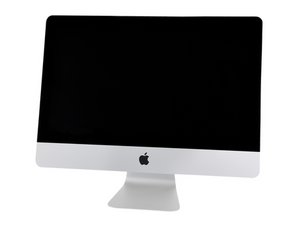SSD is not recognised any more
I’ve updated my iMacs HDD to a Samsung 860EVO 2TB. Everything was fine until i opened the imac to align the Thunderbolt ports to the chassis (check my other issue Thunderbolt ports (USB-C) no longer working).
After i aligned the logic board to the chassis i turned on the computer and saw the prohibitory symbol (do not enter).
Tried to enter with the alt key, i see Macintosh HD as a drive but it wont boot, once i select it i see the prohibitory symbol.
Tried to enter in recovery mode but disck utility doesn’t see the SSD.
Tried to enter single user mode but i get the message: Error loading kernel cache 0x7
The imac came with a fusion drive. The old boot system is still installed from what i understand.
I tried to power cycle the SSD - boot with alt key, wait in the menu for 30 mins, then turn off for 30 secs and repeat. Nothing worked. I read that this method can revive an SSD if its “broken”.
I then took out the SSD and put it in an external 2,5 enclosure and connected it on my MacBookPro but it won’t show up as well.
Is the SSD dead?
Update (10/20/2020)
So, a big update!
As a last resort , and i dont know why, i dismantled the imac and put it back together with the old (dead) SSD
I booted the computer and after 20 secs of the STOP symbol the iMac booted and everything is fine...
I backed up everything that is important
I tried deleting some files and i was getting an error, i did a first aid through disk utility and everything is back to normal, its just that everytime i start the iMac i get the STOP symbol for a couple of secs
Any thoughts?
Cette question est-elle utile ?


 1
1 
 329
329  970
970
15 commentaires
Did you format the SSD to APFS? APFS (Apple File System) is Apple's "special" format for their HDDs and SSDs.
par HeyJacksonY
That was maybe a year ago but yes as far as i remember
par George Anagnostopoulos
@jflys5000 & @George Anagnostopoulos - To clarify: macOS High Sierra and newer requires APFS and the installer will convert the older HFS+ file system to APFS if it is found.
Unless you are still running the original OS the system came with macOS Sierra (10.12.x) which is the last macOS with the HFS+ file system, the system will be APFS.
par Dan
So to clarify things, you just loosened the screws holding the logic board - Correct?
The only thing I can think of is you caught the HD SATA cable crushing it. I don't think the SSD is damaged.
par Dan
the cable is fine physically. If the SSD is ok, why wouldnt it show up on my laptop connected to an external enclosure?
par George Anagnostopoulos
Voir 10 commentaires en plus